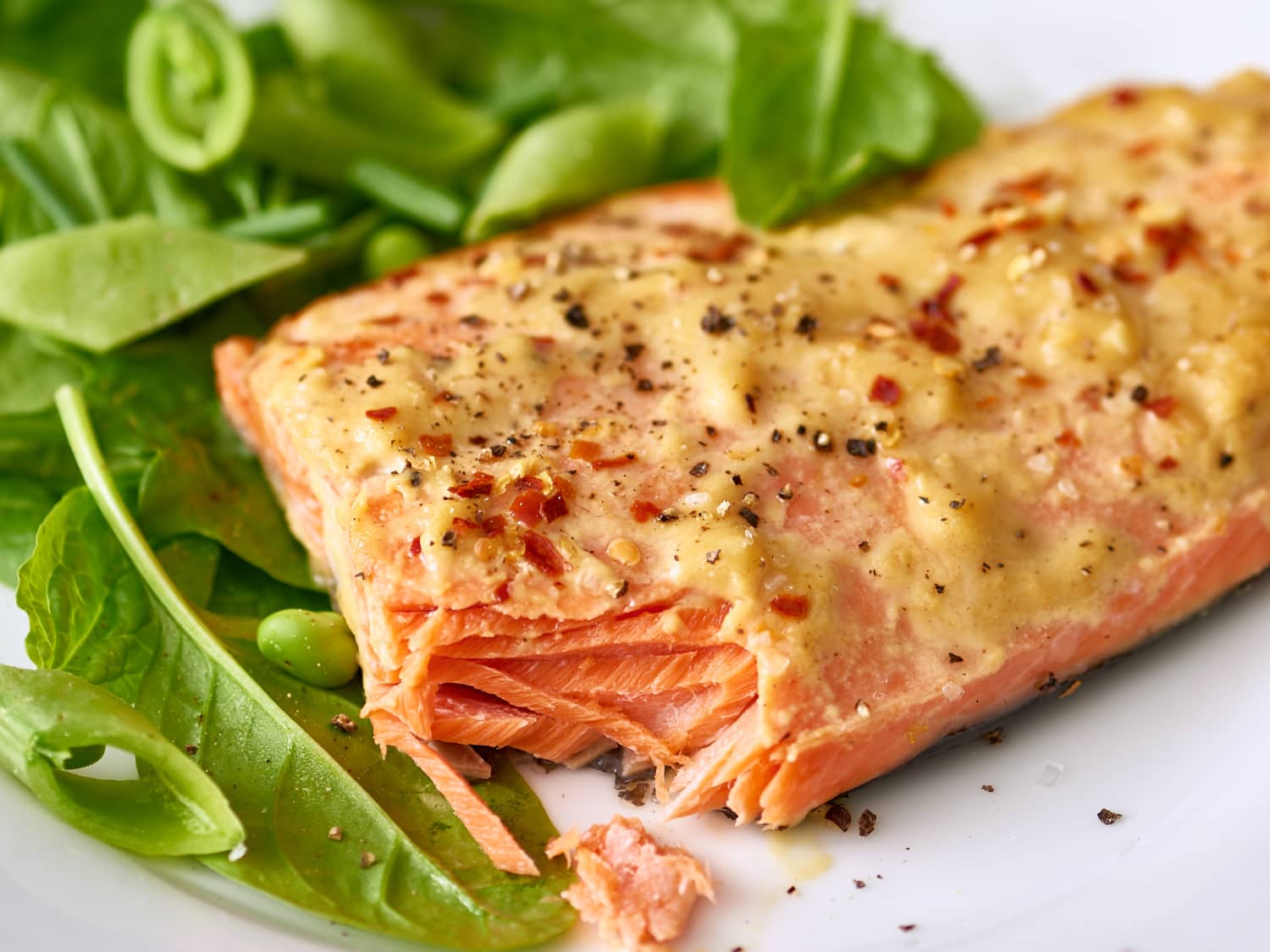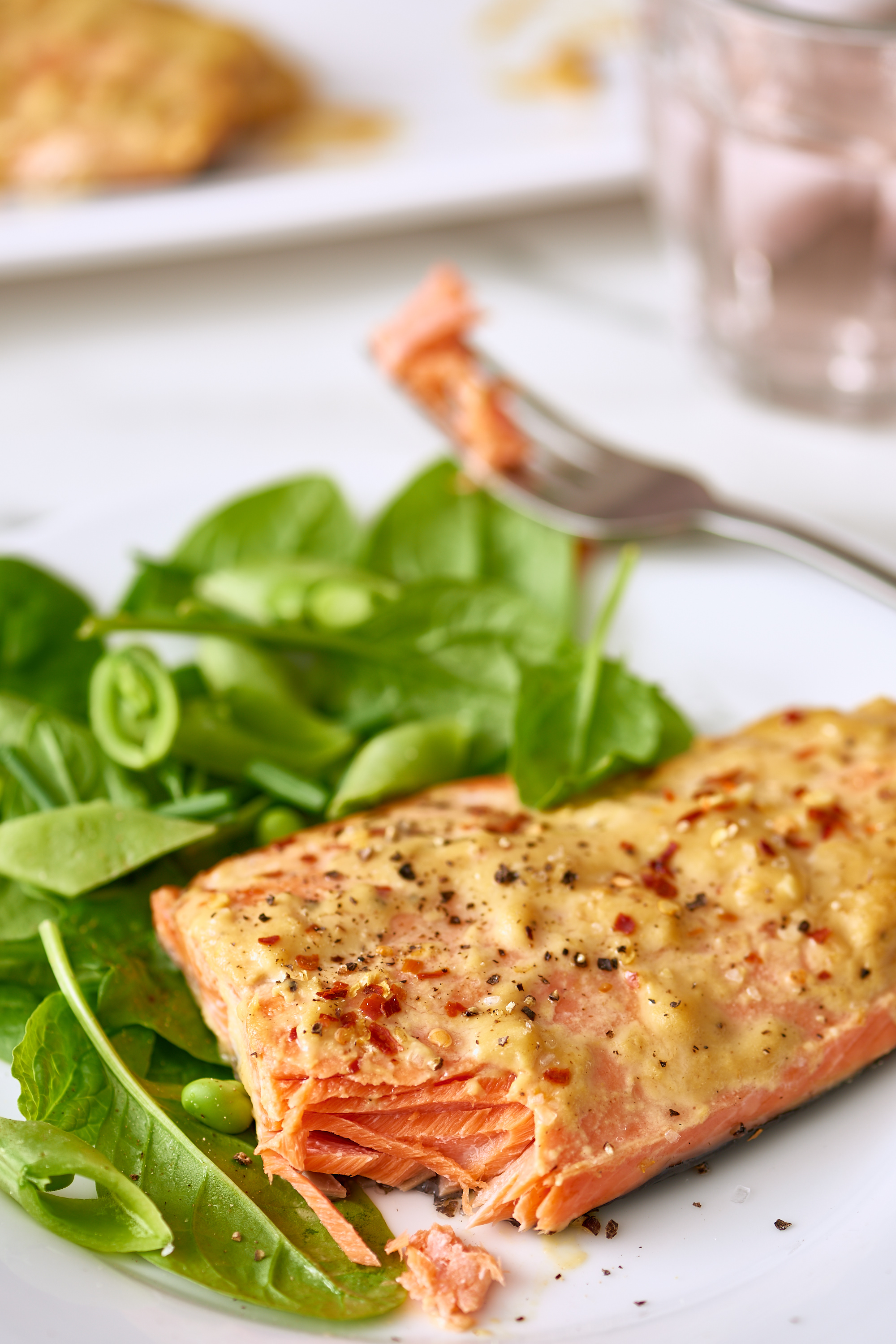Welcome fellow food enthusiasts! Today, we are diving into the world of culinary creativity as we unveil the secrets to mastering the art of baking salmon from frozen. As a professional chef, I understand the challenges that arise when you forget to defrost your salmon ahead of time. But fear not, for I am here to guide you through a culinary journey that will not only save you time but also deliver a succulent and perfectly cooked salmon dish that will leave your taste buds dancing with delight. So, grab your aprons and let’s embark on this flavorful adventure together!
How to Bake Salmon from Frozen: A Delicious and Easy Recipe
Salmon is a popular and nutritious fish that is loved by many. If you find yourself with a frozen piece of salmon and you’re wondering how to cook it without defrosting, you’ve come to the right place. In this recipe, we’ll show you how to bake salmon from frozen, resulting in a tender and flavorful dish that will impress your guests and satisfy your taste buds. With just a few simple ingredients and a little time, you’ll have a delicious meal ready to serve.
Ingredients:
- 1 frozen salmon fillet (approximately 1 pound)
- 2 tablespoons olive oil
- 1 teaspoon dried dill
- 1 teaspoon garlic powder
- 1 teaspoon salt
- 1/2 teaspoon black pepper
- 1 lemon, sliced
General Information:
- Making Difficulty: Easy
- Preparation Time: 5 minutes
- Cooking Time: 30-35 minutes
- Servings: 4
Instructions:
Step 1: Preheat the Oven
Begin by preheating your oven to 375°F (190°C). This temperature ensures that the salmon cooks evenly and retains its moisture. While the oven is preheating, take the frozen salmon out of the packaging and place it on a baking sheet or in a baking dish.
Pro Tip: To prevent sticking, you can line the baking sheet or dish with aluminum foil and lightly grease it with cooking spray or olive oil.
Step 2: Season the Salmon
Drizzle the frozen salmon fillet with olive oil, ensuring that it is evenly coated. Sprinkle the dried dill, garlic powder, salt, and black pepper over the salmon, making sure to cover the entire surface. These seasonings will add delicious flavors to the fish and enhance its natural taste.
Pro Tip: Feel free to adjust the amount of seasoning according to your personal preference. You can also experiment with other herbs and spices to create your own unique flavor profile.
Step 3: Add Lemon Slices for Brightness
Place the lemon slices on top of the seasoned salmon, evenly distributing them across the fillet. The citrusy flavor of the lemon will complement the richness of the salmon and add a refreshing brightness to each bite.
Pro Tip: If you don’t have fresh lemons, you can use bottled lemon juice or substitute with lime slices for a different twist.
Step 4: Bake the Salmon
Transfer the baking sheet or dish to the preheated oven and bake the salmon for 30-35 minutes, or until it is cooked through and flakes easily with a fork. The cooking time may vary slightly depending on the thickness of the fillet. Keep an eye on the salmon to prevent overcooking.
Pro Tip: To ensure even cooking, you can rotate the baking sheet or dish halfway through the cooking time.
Step 5: Rest and Serve
Once the salmon is fully cooked, remove it from the oven and let it rest for a few minutes. This allows the juices to redistribute, resulting in a moist and flavorful piece of fish. Serve the baked salmon with your choice of sides, such as steamed vegetables, roasted potatoes, or a fresh salad.
Pro Tip: For an added burst of freshness, garnish the salmon with some chopped fresh dill or parsley before serving.
Step 6: Store Leftovers
If you have any leftovers, place them in an airtight container and refrigerate them for up to 2-3 days. Leftover baked salmon can be enjoyed cold in salads or sandwiches, or gently reheated in the oven or microwave.
Pro Tip: To retain the moisture when reheating, you can drizzle a little olive oil or lemon juice over the salmon before warming it up.
Step 7: Enjoy!
Now it’s time to sit back, relax, and enjoy your perfectly baked salmon from frozen. The tender and flaky fish, combined with the delightful flavors of the seasonings and lemon, will make each bite a truly enjoyable experience. Share this recipe with your friends and family, and let them marvel at your cooking skills!
Remember, baking salmon from frozen is a convenient and delicious way to prepare this versatile fish. Whether you’re short on time or just forgot to thaw your salmon in advance, this method ensures a flavorful and moist result every time. So, go ahead and impress your loved ones with this effortless recipe that will make you feel like a culinary pro.
Important Things to Keep in Mind: How to Bake Salmon from Frozen
Welcome to the world of frozen salmon! Whether you’re a novice home cook or a seasoned pro, baking salmon from frozen can be both convenient and delicious. But before you dive into this culinary adventure, there are a few important things to keep in mind to ensure a successful and flavorful outcome. From proper thawing techniques to seasoning tips, here are some key points to consider when making this “how to bake salmon from frozen” recipe.
1. Thawing the Salmon:
When working with frozen salmon, proper thawing is vital to achieve the best results. Make sure to plan ahead and allow enough time for thorough thawing. The ideal way to thaw salmon is to do it slowly in the refrigerator overnight. Place the frozen salmon in a shallow dish or on a tray to catch any melting ice or juices. This slow thawing process helps retain the moisture and integrity of the fish, resulting in a tender and flavorful end product.
Avoid thawing salmon at room temperature or using hot water, as these methods can lead to uneven thawing and increase the risk of bacterial growth. Patience is key when thawing salmon, so resist the temptation to rush the process. Trust us, it will be worth the wait!
2. Seasoning and Flavoring:
While salmon is undeniably delicious on its own, adding some flavorful seasonings and marinades can take it to the next level. Before baking, consider marinating the salmon in a mixture of your favorite herbs, spices, and sauces. This step not only enhances the taste but also allows the flavors to penetrate the fish, resulting in a more robust and mouthwatering dish.
Common marinades for salmon include a combination of lemon juice, garlic, olive oil, and herbs like dill or thyme. If you prefer a bolder flavor, experiment with Asian-inspired marinades or spicy rubs. When it comes to seasoning, be generous but mindful of not overpowering the natural flavors of the salmon. Remember, a delicate balance is the key to an unforgettable dish!
3. Cooking Time and Temperature:
When it comes to baking salmon from frozen, it’s essential to adjust the cooking time and temperature to ensure optimal results. Start by preheating your oven to a moderately high temperature, around 375°F (190°C). This higher heat will help cook the salmon quickly and prevent it from drying out.
The general rule of thumb is to cook frozen salmon for approximately 20-25 minutes per inch of thickness. To determine the thickness, measure the fish at its thickest point and adjust the cooking time accordingly. It’s always better to slightly undercook the salmon and then check for doneness using a fork. If the flesh easily flakes apart, it’s ready to be enjoyed!
4. Rest and Serve:
Once you’ve baked the salmon to perfection, it’s crucial to allow it to rest for a few minutes before serving. During the resting period, the residual heat will continue to cook the salmon slightly and ensure that the flavors are evenly distributed.
When it’s time to serve, consider garnishing the salmon with fresh herbs, lemon wedges, or a drizzle of sauce for an extra touch of elegance. Whether you choose to enjoy it on its own or pair it with a side of roasted vegetables or fluffy rice, your baked salmon from frozen is bound to be a showstopper.
Now that you’re armed with these important tips, it’s time to dive into the world of baking salmon from frozen. Embrace the convenience, savor the flavors, and enjoy this delicious and healthy meal in the comfort of your own kitchen!
Frequently Asked Questions
Welcome to our FAQ section on baking salmon from frozen! Below, we’ve answered some common questions to help guide you through the process. Whether you’re a beginner or a seasoned chef, these tips will ensure your frozen salmon bakes perfectly every time.
1. Can I bake salmon directly from frozen?
Absolutely! Baking salmon from frozen is a convenient method that eliminates the need for thawing. Simply preheat your oven, season the salmon, and pop it in. Keep in mind that frozen salmon may require a few extra minutes in the oven compared to thawed salmon to ensure it cooks evenly.
For best results, we recommend using a wire rack or parchment paper to elevate the salmon slightly, allowing hot air to circulate beneath, ensuring even cooking. You’ll have a delicious, perfectly cooked salmon in no time!
2. What is the ideal oven temperature for baking frozen salmon?
The ideal oven temperature for baking frozen salmon is 400°F (200°C). This temperature allows for thorough cooking without drying out the fish. Remember to preheat your oven for about 10 minutes before placing the salmon inside to ensure even cooking from start to finish.
If your oven tends to run hot or cold, it’s a good idea to use an oven thermometer to ensure the temperature accurately matches the setting. This will help you achieve perfectly cooked salmon every time.
3. How long should I bake frozen salmon?
The baking time for frozen salmon varies depending on the thickness of the fish fillet. As a general guideline, you can bake frozen salmon for approximately 20-25 minutes. However, it’s important to adjust the cooking time based on the thickness of your salmon fillet.
If your salmon is thicker, it may require a few extra minutes in the oven. Check for doneness by inserting a fork into the thickest part of the fish – it should flake easily and be opaque throughout. Remember, it’s always better to slightly undercook than overcook salmon, as it can continue cooking even after it’s removed from the oven.
4. Should I season the frozen salmon before baking?
Absolutely! Seasoning the frozen salmon before baking enhances its flavor and adds to the overall taste experience. You can use a variety of seasonings such as herbs, spices, or even a simple salt and pepper combination.
For best results, generously season both sides of the salmon fillet, ensuring the flavors permeate throughout. If you prefer a marinated salmon, you can thaw the fillet slightly, marinate it, and then proceed with baking. The key is to infuse the salmon with your desired flavors before it goes into the oven.
5. Can I bake frozen salmon without an oven?
Yes, you can! If you don’t have an oven available, you can still bake frozen salmon using alternative methods. One popular method is baking frozen salmon in a toaster oven. Simply follow the same steps as baking in a regular oven, adjusting the temperature and cooking time accordingly.
Alternatively, you can also pan-fry the frozen salmon by heating a skillet over medium-high heat, adding a little oil, and cooking the fish for approximately 6-8 minutes per side. This will result in a crispy outer crust and tender, flaky flesh on the inside. Be sure to adjust the cooking time based on the thickness of the salmon fillet.

